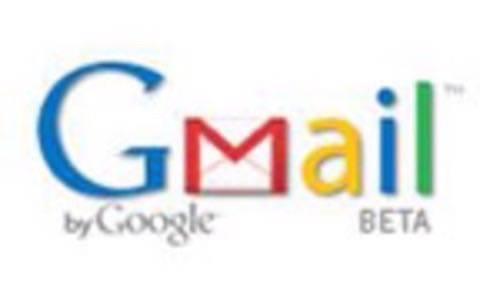A few weeks ago we published a piece on this blog entitled The Danger of Free, in which we discussed the rise of free – a marketing strategy where digital products are given away. This month’s issue of Wired magazine features a cover story
on the topic by editor-in-chief Chris Anderson. The article is a preview of his forthcoming book, called (you guessed it) Free. However in this post we look at two issues that make this new economic model rather worrisome: monopolistic markets and complex transactions.

Chris and other advocates of freeconomics argue that with costs of digital products rapidly dropping, it is best to give them away for free. This ensures customer commitment, because people would much rather get
stuff for free than pay even a penny for it.
Chris cites examples like free web mail, free DVR, free 411 and even $20 airline tickets (not quite free, but getting close)
as evidences of the emergence of freeconomics.
While it is true that people like free stuff and it is true that large companies can afford to give away stuff for free,
what is not clear yet is whether freeconomics is a good thing.
Monopolistic Markets: The Tale of GMail
One of the main examples that Chris cites is web mail. Yahoo! had a free version with limited
space and charged for extra storage. Then Google came along and made email free along with a ton of extra storage. So some people (albeit mostly early adopters at this point) moved away from Yahoo! and began using GMail. But the trend was apparent, so Yahoo! had no choice but to add more storage and make it all
free to stay competitive. Seems like a clever move by Google and a win for the customer. But is this a fair tactic?

The argument that it cost Google nothing to develop and offer GMail is wrong. Likely it costs millions of dollars each year.
The fact of the matter is that GMail was offered for free mostly because Google could afford it. This is a standard monopolistic
tactic used to enter a new market – drive the price down (in this case to $0) and kill off the competition. Yahoo! was actually first
to market and had a perfectly good product with a fair model: they offered a basic product for free and a premium product with more storage for a price. But when Google made its move, Yahoo! could not compete.
Monopolistic Markets: The Tale of DVR
Another example used in the article is that of digital video recording devices (DVR). Comcast gives out DVRs for free, just like cell phone companies give out basic cell phones for free and then make up the money with the service charges. Perhaps DVRs are a bit of a stretch, but
this example is very different from GMail. This is a case of something given away for free in order to get the customer
to pay for service – and the cost is recovered over time. It is not the same as when a company offers a product
for free to enter a new market.

Yet, the other aspect of free is quality. Anyone who owns a Comcast DVR knows that humans have never invented a worse remote control. It is just bad. Even with my masters degree in computer science, it took me a long time to master it. Free is not always good. Sooner, rather than later, free might deliver a punch on quality. If it’s free, put less engineers on it. If it’s free, then why do we need to fix bugs? It’s free – so this is good enough.
Monopolistic Markets: The Tale of the Unfunded Startup
Perhaps the biggest worry of free are startups. To begin with, how do you compete with free? Suppose someone has
a great idea for improving web mail. Entering the market is really difficult. A lot of inertia is now behind Google and in the new world of freeconomics, you can no longer compete on price. Not that long ago the
concept of better and cheaper allowed startups to make the bet. But now that cheaper has been replaced with free,
that axis is shut out.

Even more problematic is funding. How do you fund a startup that a priori can not charge the user?
One might argue that we’re now living in an ads-only monetization world, which of course we are, but things are not that simple.
First, how many startups are actually making money on ads? Sure Google is doing great, but is Yahoo!? We used to live in a world where Flickr could charge $25 per year for premium use. Now we are talking about
a world where Flickr has to be completely free to everyone and have unlimited storage to survive. What’s the model for ads next
to your own pictures?
The entire model sounds broken and certainly venture capitalists are going to be cautious until proven methods of making money arise.
This is a bit of a chicken and egg problem, but in the meantime there may be an impact on innovation. If the monetization is difficult
and financial upside is unclear, entrepreneurs will think twice about jumping into the game.
Complex Transactions: The Tale of The Middle-Man
Nothing good can come from a monopoly. It smiles at us first by giving a carrot, but the stick is sure to follow.
Yet, there is another worrisome aspect about freeconomics – the middle man. To understand the worry, consider
any company that makes an ad-supported product. The man in the middle is the ad network. You have the core product that the company
makes and you have the audience that is interested in the product, but does not want to pay for it. Here come the ads – a panacea
for the problem.

But is it really? We are in an economic downturn and suddenly companies do not want to spend money on advertising. So your business
is immediately impacted, even though the demand for your product has not diminished. How strange is that? Even as your customer base grows, you’ll still be losing money.
The fundamental problem is that every business needs to now learn the intricacies of advertising. Not only do you need to
be good at delivering your core product, but you need to be really good at placing advertising on top it. You need to make the tough choice
of using someone else’s ads or building your own ad network, which is a costly proposition.
Complex Transactions: The Tale of, well… Complexity
Speaking broadly, freeconomics leads to a family of indirect monetization techniques. Chris cites an example
of a European airline that charges people only $20 for the ride. The rest of the money they make up on meals, drinks,
priority boarding, credit card handling, advertising revenue, etc. This sounds incredibly complex for both the business and the customer.

The cost of inventing and accounting for all these different small channels of revenue is high. And to the customer it’s just
a headache. Oh, you mean you actually wanted to sit on this flight instead of standing? That will be an extra $20. What seems to be forgotten is one of the lessons large companies have already learned: you should sell bundles for one price. People want all inclusive, not all excluded.
Conclusion
While we are certainly seeing more and more examples of products being given away for free, it is not necessarily
a good thing. There are different aspects and faces of free. The Flickr free, which Fred Wilson calls freemium,
is the model where the basic version is free and the premium one costs money. This model is very different from the GMail model where the entire product, with full features, is completely free. The downside of freeconomics is a monopolistic market, with barriers to entry,
and little incentive to innovate. In addition the middle-man and transactional complexities are the other side effects of this new economic trend.
Is this good or bad? Please tell us what you think in the comments below.
Image credit: Wired Cover, March 2008










